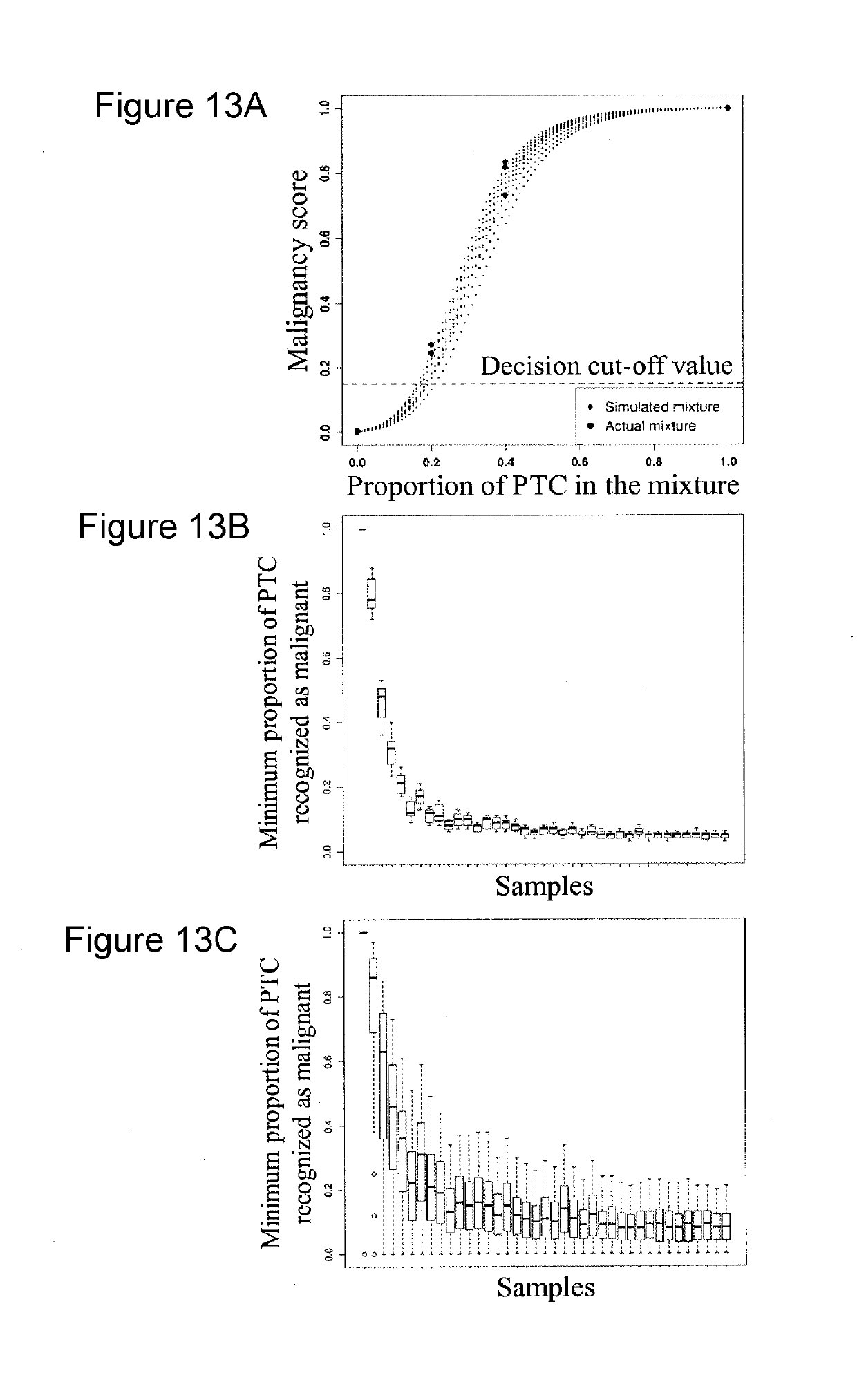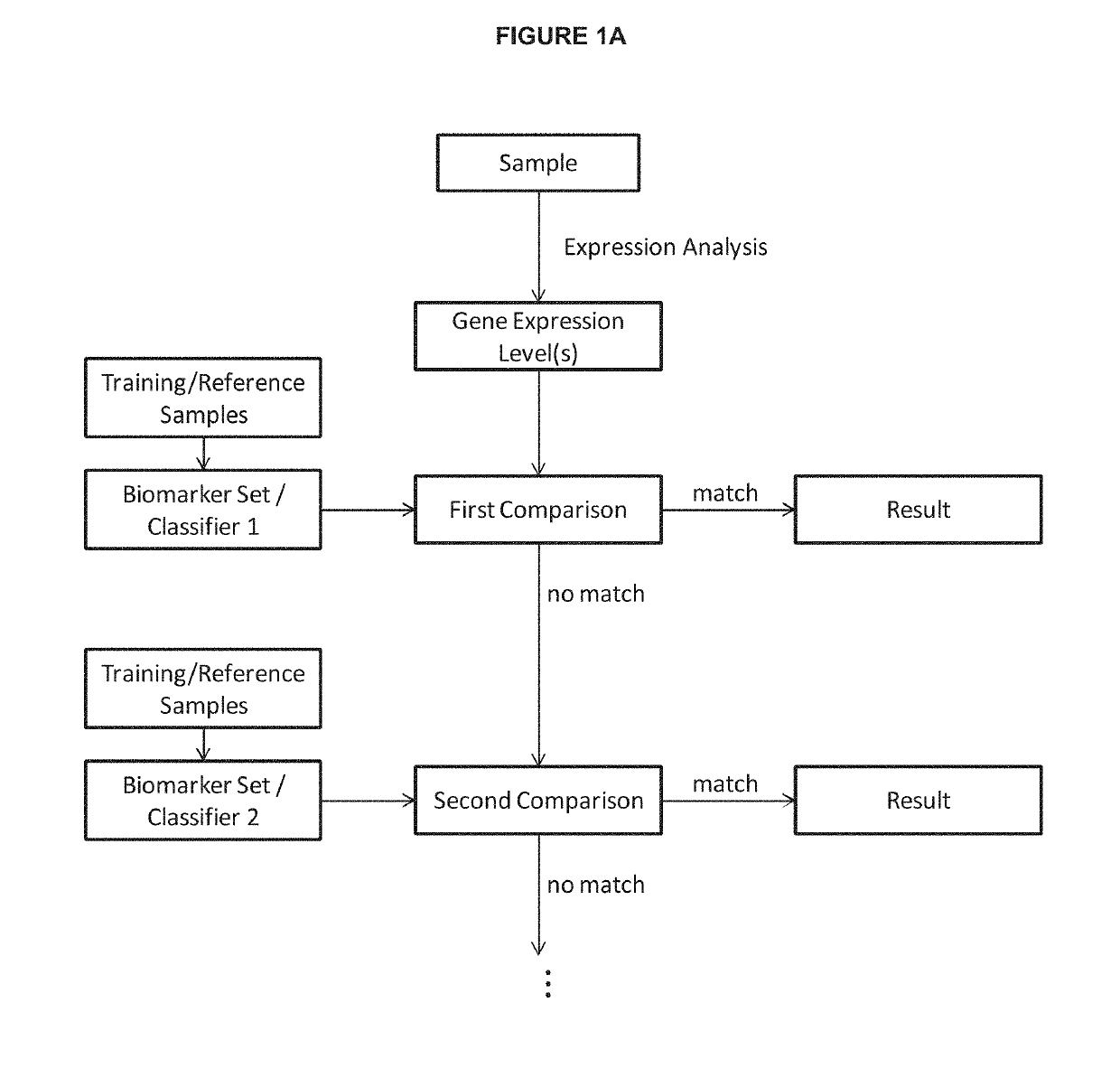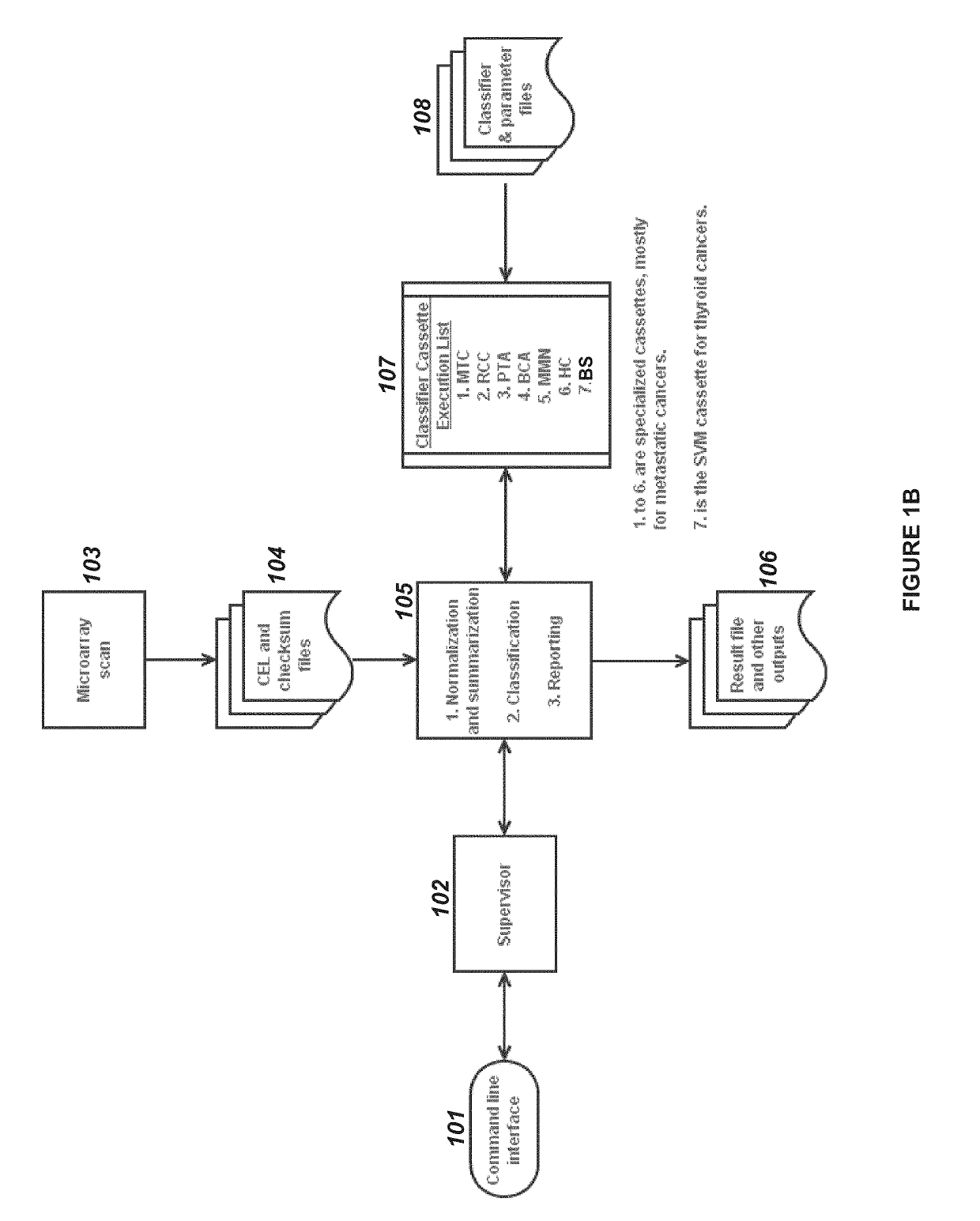Algorithms for disease diagnostics
a disease and diagnostic algorithm technology, applied in the field of disease diagnostic algorithms, can solve the problems of unnecessary follow-up procedures, costly surgical procedures, and difficult to achieve the effect of obtaining accurate diagnosis
- Summary
- Abstract
- Description
- Claims
- Application Information
AI Technical Summary
Benefits of technology
Problems solved by technology
Method used
Image
Examples
example 1
ation Panels from Analysis of Clinical Thyroid Samples
[0269]Prospective clinical thyroid FNA samples (n=248) and post-surgical thyroid tissues (n=220) were examined with the Affymetrix Human Exon 1.0 ST microarray in order to identify genes that differ significantly in mRNA expression between benign and malignant samples.
[0270]Affymetrix software was used to extract, normalize, and summarize intensity data from roughly 6.5 million probes. Approximately 280,000 core probe sets were subsequently used in feature selection and classification. Models used included LIMMA (for feature selection), and SVM (used for classification) (Smyth 2004;). Top genes used in each classification panel were identified in several separate analyses using a combination of LIMMA and algorithms.
[0271]While the annotation and mapping of genes to transcript cluster identifiers (TCID) is constantly evolving, the nucleotide sequences in the probes and probe sets that make up a TCID do not change. Furthermore, a n...
example 2
Profiling of Thyroid Nodule
[0275]An individual notices a lump on his thyroid. The individual consults his family physician. The family physician decides to obtain a sample from the lump and subject it to molecular profiling analysis. Said physician uses a kit to obtain the sample via fine needle aspiration, perform an adequacy test, store the sample in a liquid based cytology solution, and sends it to a molecular profiling business. Optionally, the physician may have the cyotology examination performed by another party or laboratory. If the cytology examination results in an indeterminate diagnosis, the remaining portion of the sample is sent to the molecular profiling business, or to a third party. The molecular profiling business divides the sample for cytological analysis of one part and for the remainder of the sample extracts mRNA from the sample, analyzes the quality and suitability of the mRNA sample extracted, and analyzes the expression levels and alternative exon usage of ...
example 3
ation of Hurthle Cell Adenoma and Carcinoma in Thyroid Tissue
[0277]Post-surgical thyroid tissue samples and clinical thyroid FNA biopsies were examined with the
[0278]Affymetrix Human Exon 1.0 ST microarray in order to identify biomarkers that differ significantly in mRNA expression between benign and malignant samples. These biomarkers were then used to train a molecular classifier using the same post-surgical tissue sample cohort. The information learned during algorithm training using tissue samples, including but not limited to biomarker selection for each thyroid subtype, was combined with a further step of algorithm training using clinical FNA samples, such that the high-dimensionality nature of biomarker expression in FNA can be preserved and used to train an optimized or next-generation molecular classifier. By combining the information learned from tissue and clinical FNAs, the molecular classifier proved to be an accurate molecular diagnostic of Hurthle cell adenoma and Hur...
PUM
| Property | Measurement | Unit |
|---|---|---|
| composition | aaaaa | aaaaa |
| acid | aaaaa | aaaaa |
| size | aaaaa | aaaaa |
Abstract
Description
Claims
Application Information
 Login to View More
Login to View More - R&D
- Intellectual Property
- Life Sciences
- Materials
- Tech Scout
- Unparalleled Data Quality
- Higher Quality Content
- 60% Fewer Hallucinations
Browse by: Latest US Patents, China's latest patents, Technical Efficacy Thesaurus, Application Domain, Technology Topic, Popular Technical Reports.
© 2025 PatSnap. All rights reserved.Legal|Privacy policy|Modern Slavery Act Transparency Statement|Sitemap|About US| Contact US: help@patsnap.com



